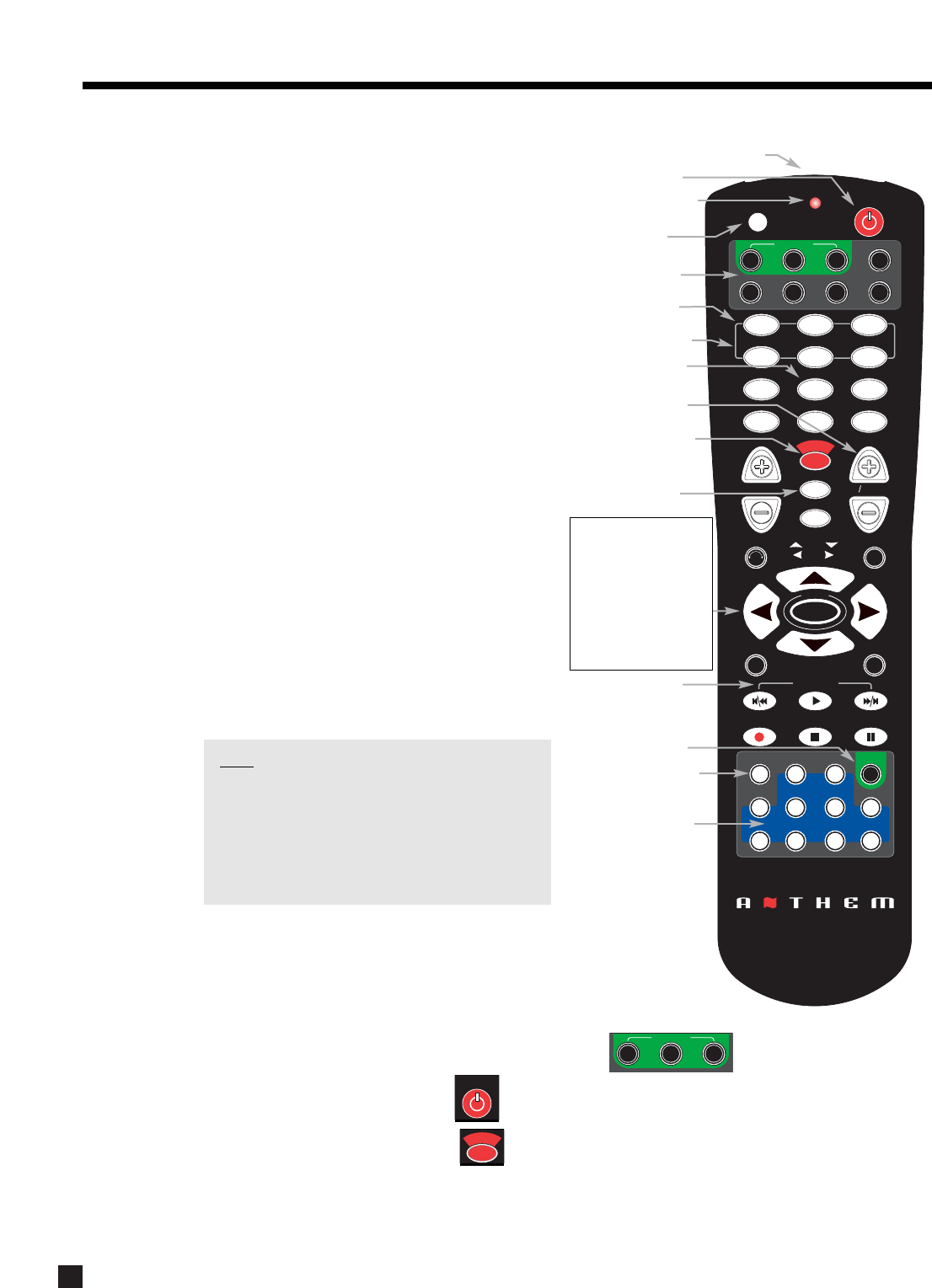35
6. REMOTE CONTROL OPERATION
Dr. Jekyll and Mr. Hyde, as you may know, were two
very different personalities, even though they were
the same person. Well, the AVM 30 Remote Control
is the host to NINE different personalities! (All of
them ‘good’, of course.)
The AVM 30 Universal Learning Remote Control has
all of the same functions as the front panel buttons
and is operated in a similar way, but there are some
differences. Please take the time to read this
section to fully understand all the functions of the
AVM 30 remote Control.
The keys labeled in this illustration show those that
have a different method of operation from their
front panel counterparts. Those shown in bold
italics indicate keys that are unique to the Remote
Control and not found on the Front Panel. For a
detailed layout diagram see section 3.3.
To install the batteries, remove the cover that is on
the bottom of the remote, and be sure that they’re
installed with the correct polarity. Down the road, if
the keys don’t light up when they’re pressed, and
the red LED blinks twice, it’s an indication that the
batteries need replacement – use only ‘AA’ alkaline.
Before we get started, we have to give the remote
a little attitude adjustment – set the ‘personality’ to
MAIN by pressing MAIN near the top of the remote.
Note
: The Path /Component keys do not
transmit any commands to the AVM 30, or
anywhere else. They only determine where
subsequent commands are sent. For example,
if ZONE2 is selected followed by VOL
+
, then
the volume changes in ZONE2 while MAIN and
all other components remain unaffected.
6.1 POWERING THE AVM 30 ON AND OFF
Two separate keys are used to turn the AVM 30 On/Off, because discrete
power commands are required in most custom installations.
First set MAIN, ZONE2, or ZONE3 personality in SSP Path.
• Power ON: Press POWER.
• Power OFF: Press SSP OFF.
